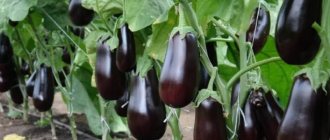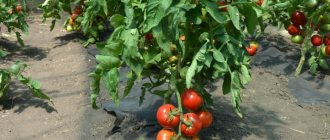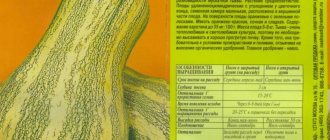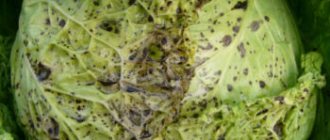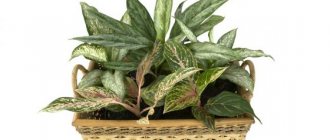Every gardener wants to find a tomato variety that is perfect for him and his plot. So that this variety combines the best qualities. Gardeners primarily look at yield level, taste, shelf life and whether the variety requires special care. Also, quite a lot of attention is paid to resistance to various pests and diseases. When looking for a suitable variety, gardeners do not search for long, because they do not believe that all the positive qualities can be found in one variety. But no, this is possible, this is the Bobcat f1 tomato.
Tomato Bobcat f1: description and characteristics of the variety
Tomato Bobcat: photo of variety
The Bobcat tomato variety belongs to the Determinate group. On average, the plant reaches about 90-110 centimeters in height. Tomatoes can be grown both outdoors and indoors. The Bobcat tomato is a late-ripening variety. That is, the first wave, when it will be possible to harvest tomatoes, will come in 130 days.
Note: If you are planning to grow the Bobcat tomato variety in the northern region, then due to its ripening period, this should only be done indoors.
- When fully ripe, the fruit of the Bobcat f1 tomato becomes a rich red color, shimmering a little orange in the sun. Also, there should be no green spot near the stem of the fruit.
- The shape of the fruit is slightly elongated, the shell is dense, but thin. Therefore, it is not felt when eating, and is also slightly ridged.
- The pulp of the Bobcat tomato is quite fleshy, with an excellent taste and aroma. When the fruit is cut open, you can see 5 chambers in which the seeds are located.
- With proper care, the harvest stabilizes and becomes regular from year to year.
Note: Since the shell of the fruit is dense, they are perfectly preserved as a whole, without bursting, like many varieties. It doesn’t even shrivel, as the skin makes it a heat-resistant variety.
Main rules of cultivation
The description of the variety makes it clear that tomato seeds should be planted in March or early April. No special preparation is required; for planting you will need ordinary soil with the addition of humus. The seeds are laid out on the ground, then they are sprinkled. Using a sprayer, the soil with plantings is wetted. The container with seeds is covered with film or glass.
Experts are confident that the Bobcat f1 variety can be considered a revolutionary tomato
After the seedlings are obtained, the box with seedlings is exposed to light and the film is removed. When two true leaves appear on the plants, you can pick (transplant) the crop. During the period of seedling growth, it is fertilized with potassium fertilizers. In order for the sprouts to be strong and strong, it is worth organizing the lighting with LED or fluorescent lamps. On warm days, it is useful to harden boxes with seedlings in a greenhouse or outside; to do this, it is enough to keep the plants in sunlight - for adaptation, but for a short time.
Almost all varieties of tomatoes require shaping, Bobcat is no exception. If you want to get an early harvest, you should form the plant into one trunk. To get a larger harvest, you will need 2 stems, but the ripening time for vegetables will be delayed.
Almost all tomato varieties require shaping, Bobcat is no exception.
It will not be possible to grow an enviable number of tomatoes if the extra stepsons that take away the strength of the plant are not removed. In addition, it is better to tie the bushes to supports; watering is carried out 1-2 times a week, but this depends on weather conditions. When cultivating a variety in greenhouse conditions, do not forget about ventilating the room.
Bobcat tomatoes: reviews from gardeners about the variety
Many reviews about Bobcat f1 tomatoes are positive, since the variety is highly resistant to many diseases. The yield level of Bobcat tomato is also high. With proper care, 1 square meter produces about 6-7 kilograms of fruit. And if you don’t bother too much with care, you get about 3-4 kilograms per square meter.
Also, gardeners growing the Bobcat tomato variety highlighted both the pros and cons of the variety:
Pros:
- The Bobcat tomato variety is resistant to short-term droughts and excess moisture in the soil. But it is recommended not to tempt fate and avoid droughts and waterlogging.
- High resistance to many diseases and viruses.
- Excellent taste and aroma of tomatoes.
- Even with a little care, the plant will still produce a good harvest.
- Bobcat F1 tomatoes can be used in different areas, that is, they are universal in use.
Minuses:
- Refers to late ripening varieties.
- When grown in the northern regions, the Bobcat f1 tomato variety cannot develop in open ground. Therefore, it is planted only in closed ground.
Tomato Bobcat f1: photo of variety
How to plant Bobcat tomatoes
Bobcat tomatoes: photo of variety
Bobcat f1 tomatoes should be planted in early spring, in early March. Since this variety is a hybrid, the seeds are purchased in specialized stores. Purchased Bobcat tomato seeds have already been treated with the necessary means and are ready for planting. The gardener can only place the seeds in the ground and water them.
It is also recommended to buy soil in the store, as it will already be prepared, or prepare the soil yourself. This will take a little time. It is necessary to take the soil from the site and heat it in the oven. After this, treat it with a solution of potassium permanganate and dry it. Then it must be mixed with humus in equal quantities.
The prepared soil is placed in any containers. Furrows 15 millimeters deep are made and sowing is carried out. Bobcat F1 tomato seeds are laid out in grooves and covered with soil. After which you need to pour water by spraying. Then you need to insulate the soil using a plastic bag or film.
The containers are placed in a room where it is dark and warm, the air temperature is about +24 degrees. After 6-10 days, the first shoots will appear and the film must be removed. The sprouts are transplanted into separate containers and fertilizer with potassium is added to the soil. In the future, it will be very easy to care for the seedlings; they will need to be watered and well lit.
Due to the short spring day, Bobcat f1 tomato seedlings will need more light. For this purpose, special artificial lighting is used.
Note: Artificial lighting can be a regular LED or fluorescent lamp.
Tomato Bobcat: photo of variety
Hardening of seedlings
When the weather becomes warm in the spring, the seedlings need to start hardening off. By then she will have grown well. For hardening, it is necessary to place the seedlings in fresh air. To begin with, this is done in the evening for 1 hour. And then the time increases and after 5-6 days the seedlings can be exposed to the sun. This hardening usually lasts 10-11 days.
Transplanting Bobcat tomato seedlings
After the Bobcat tomato seedlings have grown stronger, they should be transplanted into open or closed ground. The transplant is carried out into holes, between which there should be about 60 centimeters. Planting should be staggered.
The distance between the bushes is a mandatory criterion, since if it is not met, the tomato yield drops by 2-3 times. The soil must be well prepared before transplanting. To prepare open ground you will need copper sulfate.
You need to prepare a solution from it. 10 grams of the substance per 5 liters of warm water, and pour it into the soil. Vitriol will disinfect the soil well. After which a small amount of a mixture of ash and humus is added to the soil.
Plant Formation
After the transplant, you need to think about the formation. Sometimes only the central stem is left, but then the harvest will be small. But the formation of two stems gives an excellent harvest.
Growing seedlings
Before planting tomatoes in the ground, seedlings are grown. This is usually done at home on the windowsill.
Planting material is sown in early or mid-March (times are calculated depending on the region).
Preparing the seeds
Before you start growing seedlings, prepare your planting material. Make sure the seeds have not expired. An expired product will have low germination.
Seed preparation:
- Sort out the planting material. Remove damaged and blackened seeds.
- Bobcat does not require preliminary disinfection. Therefore, there is no need to treat the seeds with potassium permanganate. To check the germination of seeds, you can soak them in a weak salt solution. The floating material will not rise, so it is removed.
- Before planting, the seeds can be soaked in a growth stimulator. To do this, you need to cut the gauze and moisten it with liquid. The seeds are placed in it for 12 hours.
Selecting container and soil
For sowing seeds, it is better to take a large container. This will make it possible to fit all the planting material in one container. At the same time, the pot may not have much depth.
After germination, the plants are planted in individual pots. To do this, you can use ordinary half-liter plastic cups or peat pots.
You need to prepare glass or film with which you will cover the sprouted seeds for the first time.
The container is disinfected before use. This will reduce the likelihood of plant infection.
Soil for planting can be purchased at a specialty store. Such soil contains all the necessary microelements.
Homemade soil is also suitable for growing seedlings, but you shouldn’t just take soil from the garden. To provide the plants with the most comfortable conditions, a mixture of turf, humus, peat (1:1:1) is prepared and a glass of ash is added for every 10 kg of the mixture.
Before use, the soil must be disinfected. One of the options for soil disinfection is treatment with a weak solution of potassium permanganate. Calcination at a temperature of 80 degrees can also be used for these purposes.
Sow the seeds
The seeds are planted in a prepared large container. To do this, grooves 1 cm deep are made in pre-moistened soil at a distance of 2 cm from each other. Seeds are placed in the recesses at a distance of 1 cm.
The planting material is sprinkled with a small amount of soil on top. The earth cannot be compacted.
The container with seeds is covered with glass or film and placed on a windowsill or under a phytolamp.
The optimal temperature for seed germination is 25 degrees. To ensure an optimal level of humidity, the film covering the seeds must be opened slightly every day for several hours.
Rules for caring for seedlings
Compliance with all the rules is a guarantee that you will grow strong and viable plants.
Rules for caring for seedlings:
- Seeds planted in a common container are moistened as the soil dries. This should be done from a spray bottle with water at room temperature.
- Two weeks after sowing the seeds, you can remove the film from the container in which they were grown.
- When true leaves form on the plants, they are transplanted into separate containers. If the root of the plant is too long, then the lower fragile part can be pinched off. This will allow the plant to take root better.
- After pinching down one-third of the plant roots, their growth may temporarily slow down. There is no need to be afraid of this, since in the future the indicators will normalize, and the plant will be more resilient and strong.
- Tomatoes placed in individual containers are watered with water from a watering can. This must be done carefully so as not to wet the greens.
- A week after picking the seedlings into separate pots, they are fed with compositions based on vermicompost.
- Two weeks before planting tomatoes in the ground, you need to start hardening them. Pots with Bobcat are taken out onto the balcony or street during the warm time of the day. You need to start with 15 minutes, gradually increasing the time to the whole day.
What care does a Bobcat tomato require?
Bobcat tomatoes: photo of variety
The Bobcat tomato variety does not require any special care, but basic care should be provided.
- Due to the high yield level, a lot of fruits are produced on the bush. Therefore, he needs to install a support and tie it to it. Otherwise, the branches along with the fruits will break.
- Unnecessary stepsons should be removed, as they depress the bush.
- The Bobcat tomato variety responds well to watering, but it does not like excess moisture. Therefore, it is necessary to water 2 times every 7 days.
- The bush has fairly dense foliage, so it should be trimmed to facilitate the development of the variety.
- To retain moisture in the soil, you can sprinkle it with straw or hay.
- If the Bobcat is grown indoors, then regular ventilation is necessary.
If these basic care measures are followed, the plant will bear fruit and develop well.
Scope of application of tomatoes
Bobcat, like other tomatoes, is used primarily in cooking. They can be eaten fresh, made into pickles and snacks, fried, or stewed. Due to their meatiness and juiciness, they produce tasty and healthy tomato juice, rich in vitamins and minerals.
Some industries use this variety to make tomato paste and ketchup. The fruits are tasty, which is why they are used fresh or dried as dry seasonings for first and second courses (due to their pronounced tomato taste).
How to increase the yield of Bobcat tomatoes?
When studying Bobcat tomatoes, many vegetable growers noticed that even with minimal care, large harvests can be harvested. There are some secrets to increasing yield that really work.
- Since the Bobcat tomato loves moisture, it can be preserved with hay or straw. Even with abundant watering, the plant does not become infected with fungi and cracks do not appear on the fruits. It becomes quite difficult to retain moisture in the soil on hot summer days. Then it is necessary to carry out treatment with Quadris or Ridomil Gold.
- This variety develops well without any fertilizers, but if complex fertilizing is applied, the yield will increase.
If you take good care of your crop, it will thank you with a wonderful harvest.
Bobcat tomatoes: photo of variety
Diseases and the fight against them
The Bobcat tomato is highly resistant to many diseases and pests. It is even called an invulnerable variety. Despite this, preventative measures should be taken as they will protect the plant. Neglecting preventive measures will increase the risk of infection by 3 times.
Prevention for Bobcat tomatoes is the usual proper watering, loosening the soil, providing good lighting and applying fertilizer.
The most dangerous pest for the Bobcat f1 tomato is the whitefly. To eliminate it, you need to carry out the usual treatment with Confidor. A solution is prepared from this drug, 2 milliliters of the substance per 20 liters of warm water.
